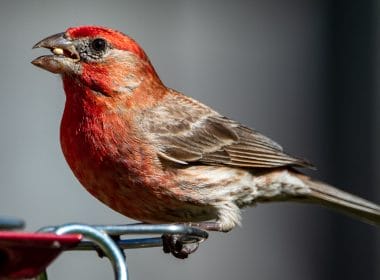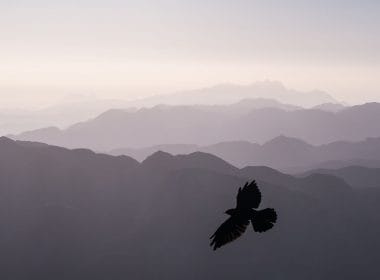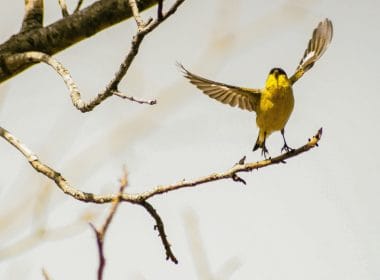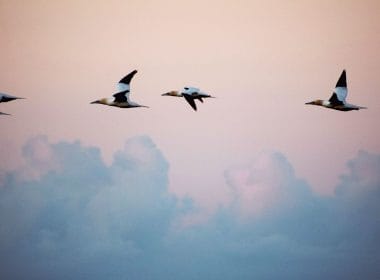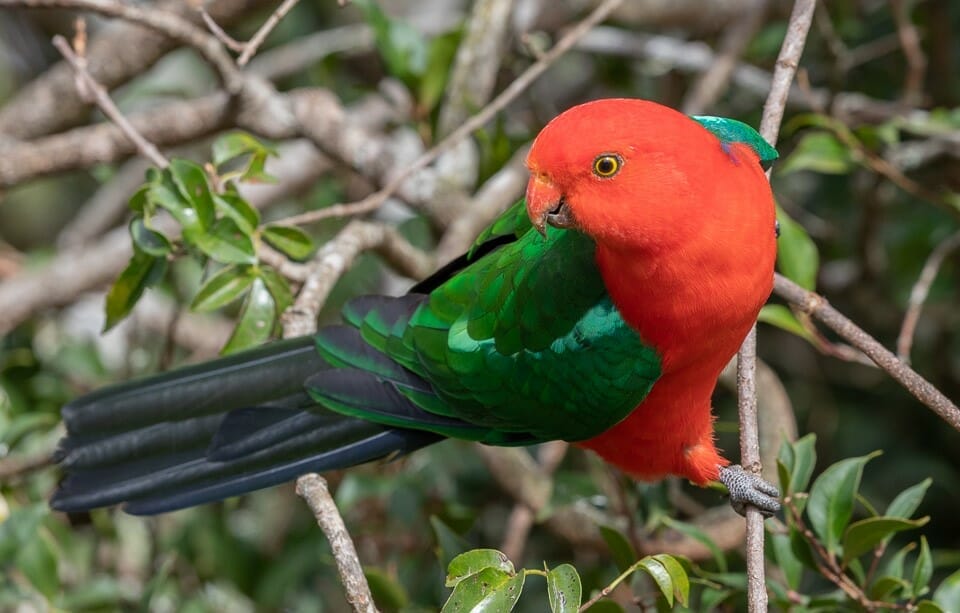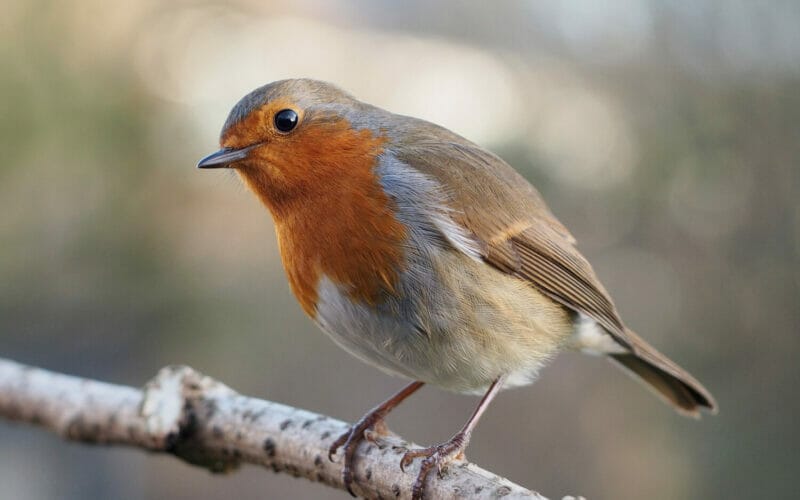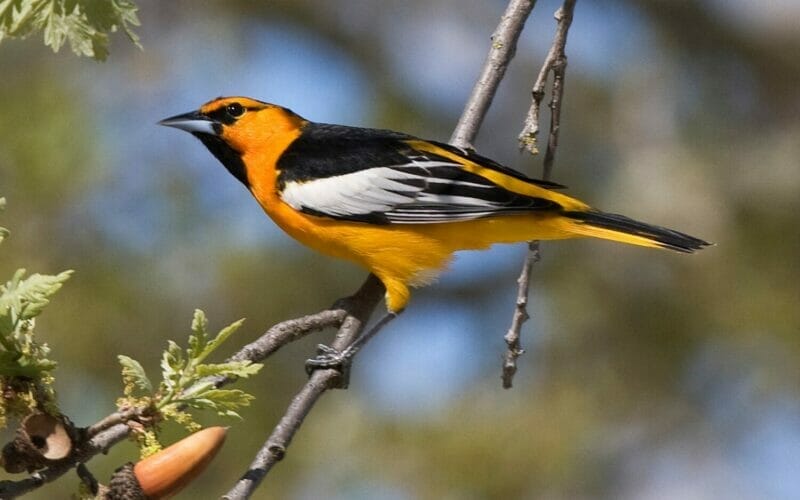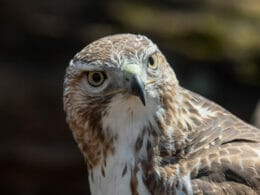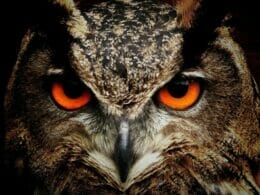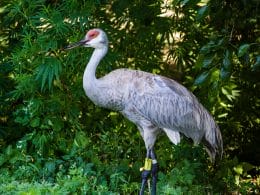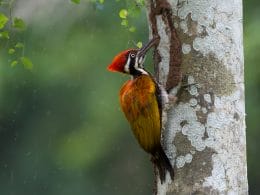Are birds with red heads common? What causes birds to have red heads? In this post we will be reporting on the birds with red heads in the United States and beyond. Also, we will try to answer questions about them.
What causes red feathers?
Birds are not naturally bright in color. There are several factors that create vivid shades in feathers. It is a very complicated biological process, a bit beyond me. For more reading, click here
Melanin
Melanin is responsible for creating colors like black, brown, gray and orange shades. It is found in the cells of the birds.
Carotenoids
This is a pigment that is introduced into the bird by the food that it eats and it is responsible for the bright colors in birds – including vivid red heads.
The best example of how carotenoids work in birds is to think of the flamingo. We all know that they are bright pink because of the food they eat. That is carotenoids in action.
10 of the Best
House Finch (Haemorhous mexicanus)
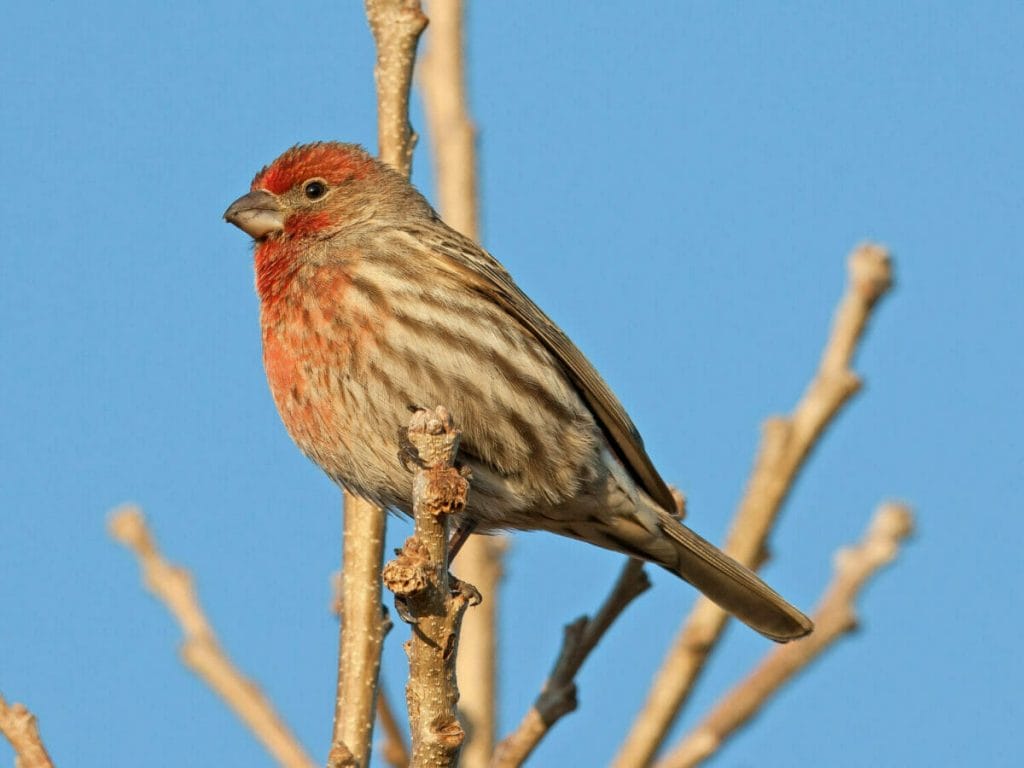
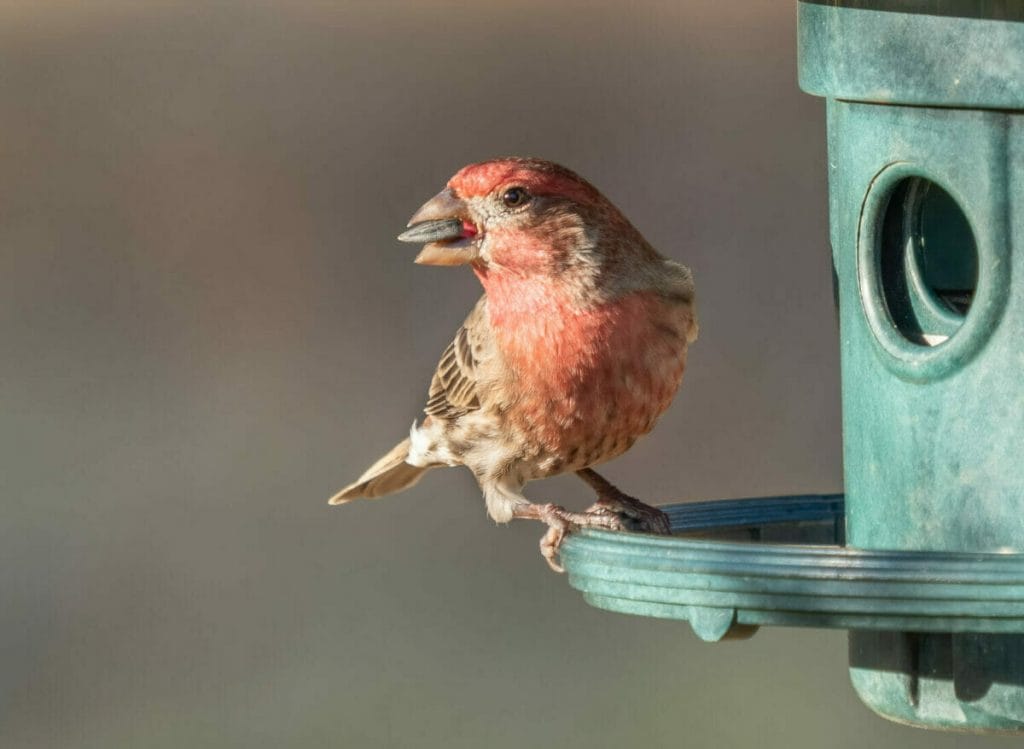
Identification and Size
An attractive finch with a brown back and the female has a cream front with brown streaks. The male has varying amounts of red across the breast and head. At times it is even yellow or orange.
Length: 5.1 – 5.5 inches
Wingspan: 7.9 – 9.8 inches
Weight: 0.6 – 0.9 ounces
Distribution
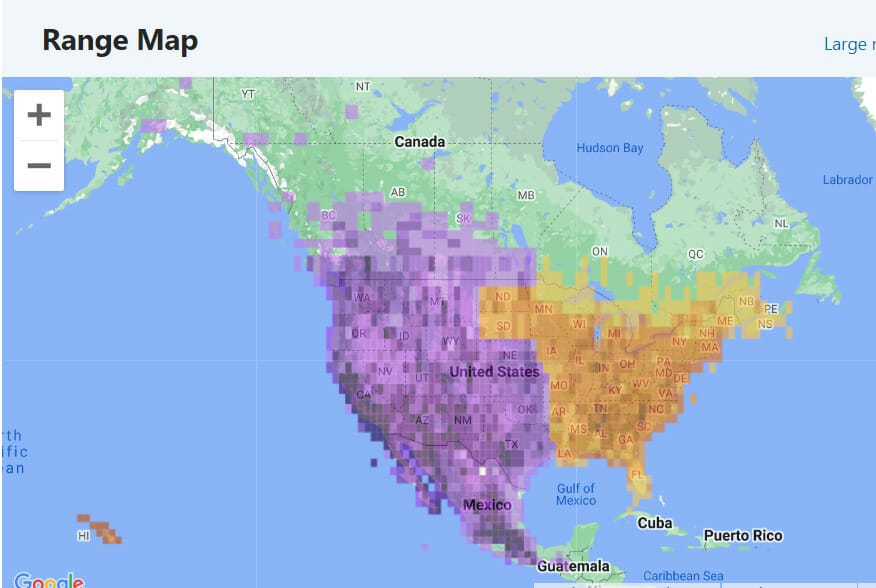
The House Finch is native to the western United States, including some sightings in Alaska. It is classed as introduced in the east and Hawaii.
Call
Diet
The House Finch eats seeds and particularly loves black oil sunflower seeds and will flock to feeders with them in.
Interesting Fact
The House Finch population in the eastern side of the U.S. all descend from some captive birds released in Long Island in 1940.
Pine Grosbeak (Pinicola enucleator)
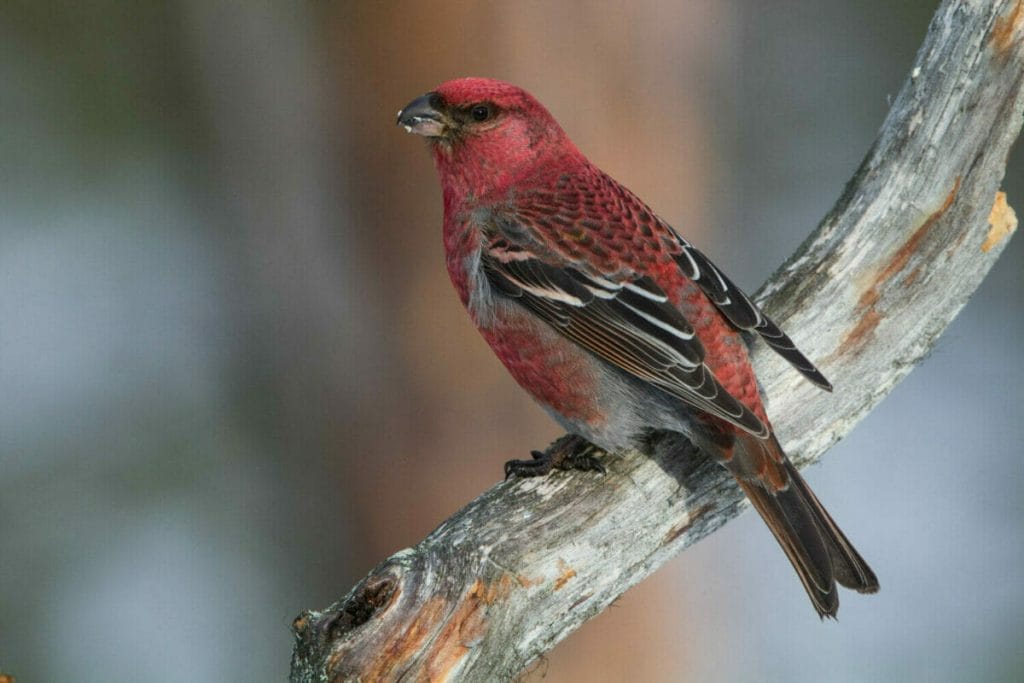
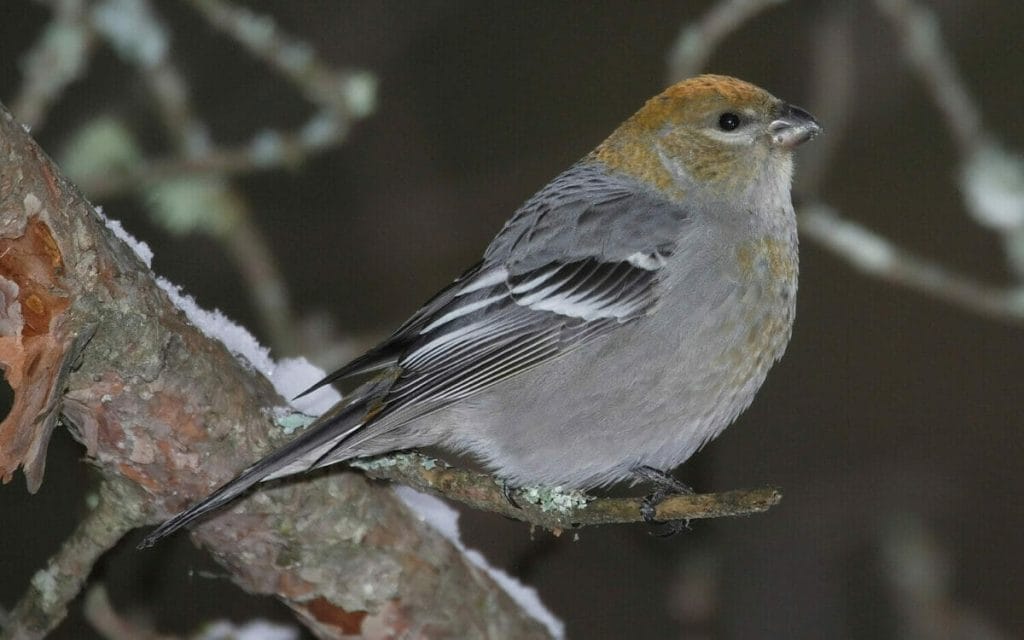
Identification and Size
The Pine Grosbeak is a large and very attractive forest finch. The female is rather round and plain with faded orange on the head. The male is a dark pinky red on the body and through the head. The wings and tail are black, gray and white.
Length: 7.9 – 10 inches
Wingspan: 13 inches
Weight: 1.8 – 2.8 ounces
Distribution
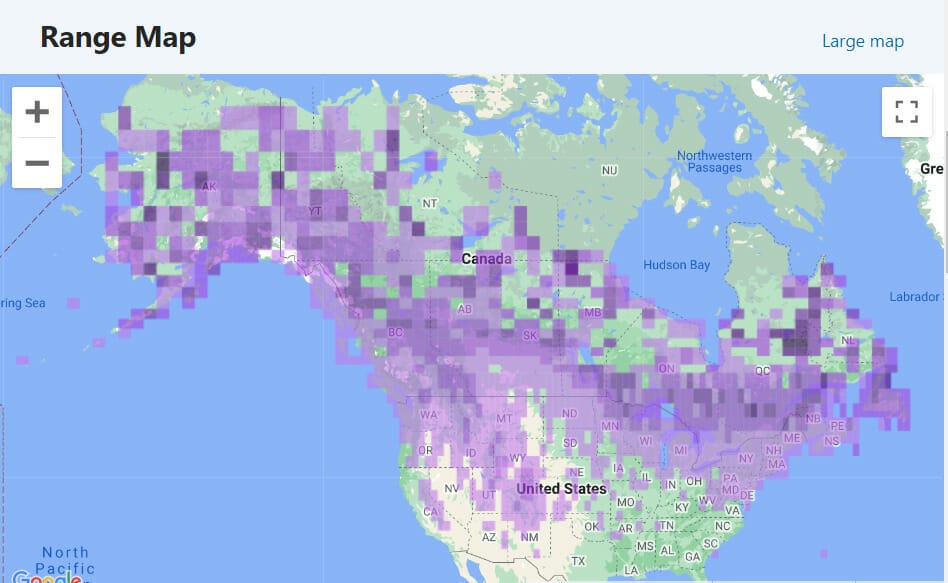
The Pine Grosbeak winters in the United States, mainly in the northen parts.
Call
Diet
This grosbeak collects seeds in the forest and eats a lot of plant material. It will also take available fruits.
Interesting Fact
As the Pine Grosbeak has such a wide range, it also varies in plumage and size. In the west, it is smaller than eastern populations.
Northern Cardinal (Cardinalis cardinalis)
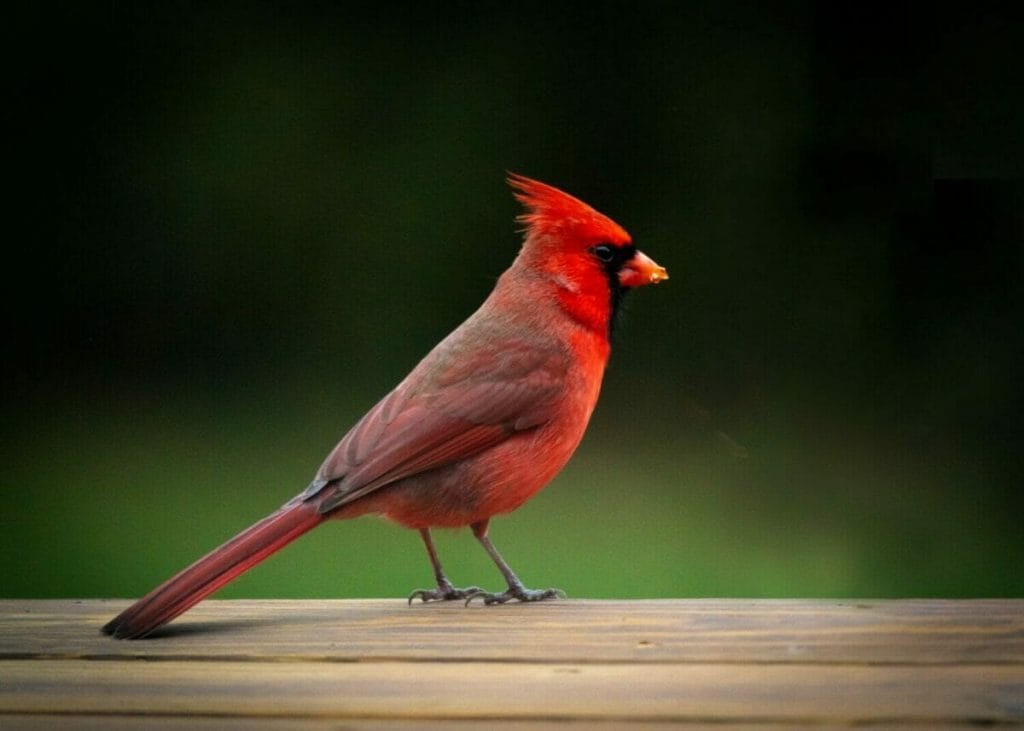
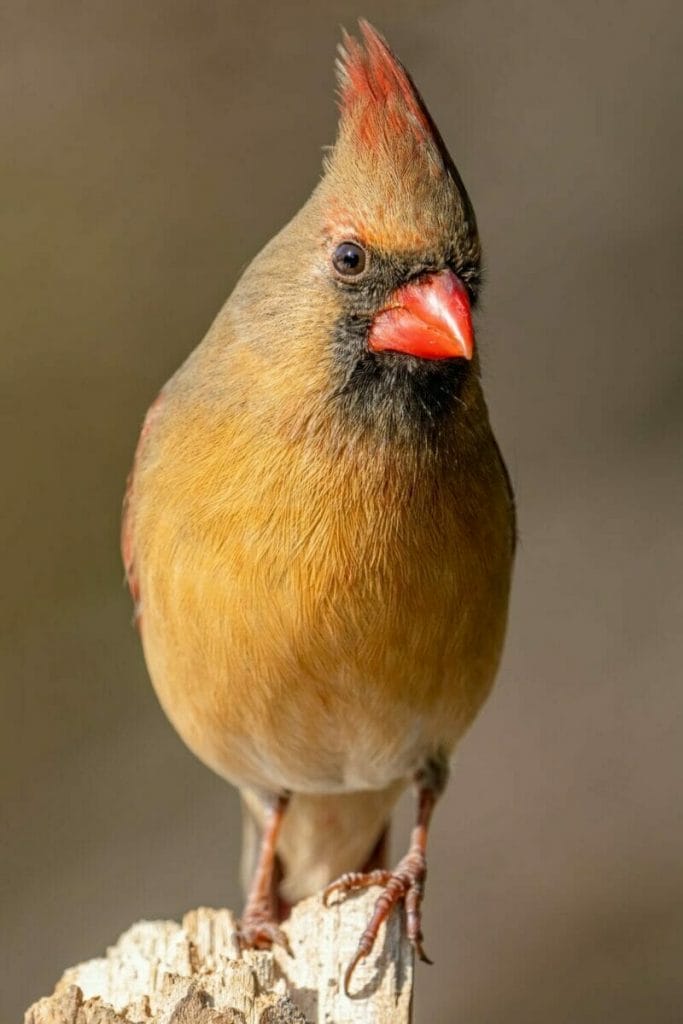
Identification and Size
A very common and stunning songbird that is beloved where ever it is found. The female is an orangey brown with a black face and red crest. The male is bright red all over with a black face.
Length: 8.3 – 9.1 inches
Wingspan: 9.8 – 12.2 inches
Weight: 1.5 – 1.7 ounces
Distribution
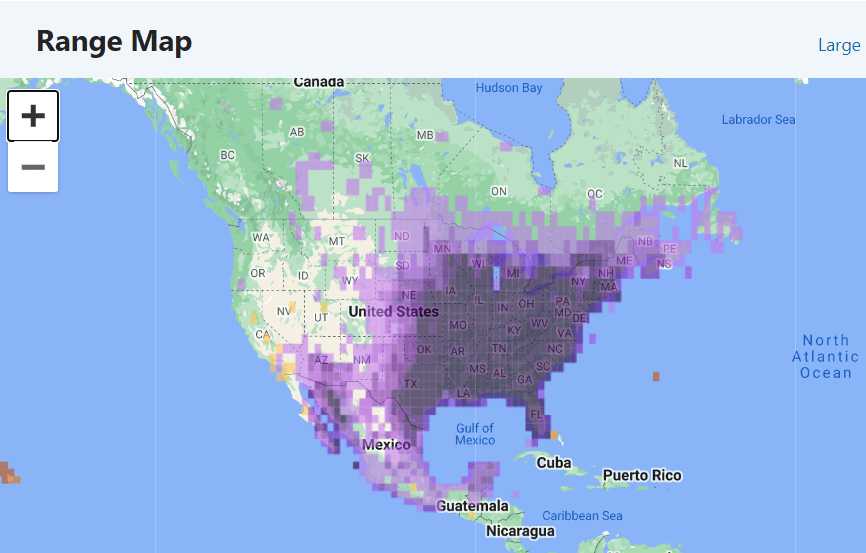
The Northern Cardinal population is concentrated in the eastern side of the U.S. but still common in central parts and the south west.
Call
Diet
A regular visitor to backyard feeders, the Northern Cardinal where they appreciate sunflower seeds the most.
Interesting Fact
The Northern Cardinal is so popular that it is the state bird of seven states.
Pyrrhuloxia (Cardinalis sinuatus)
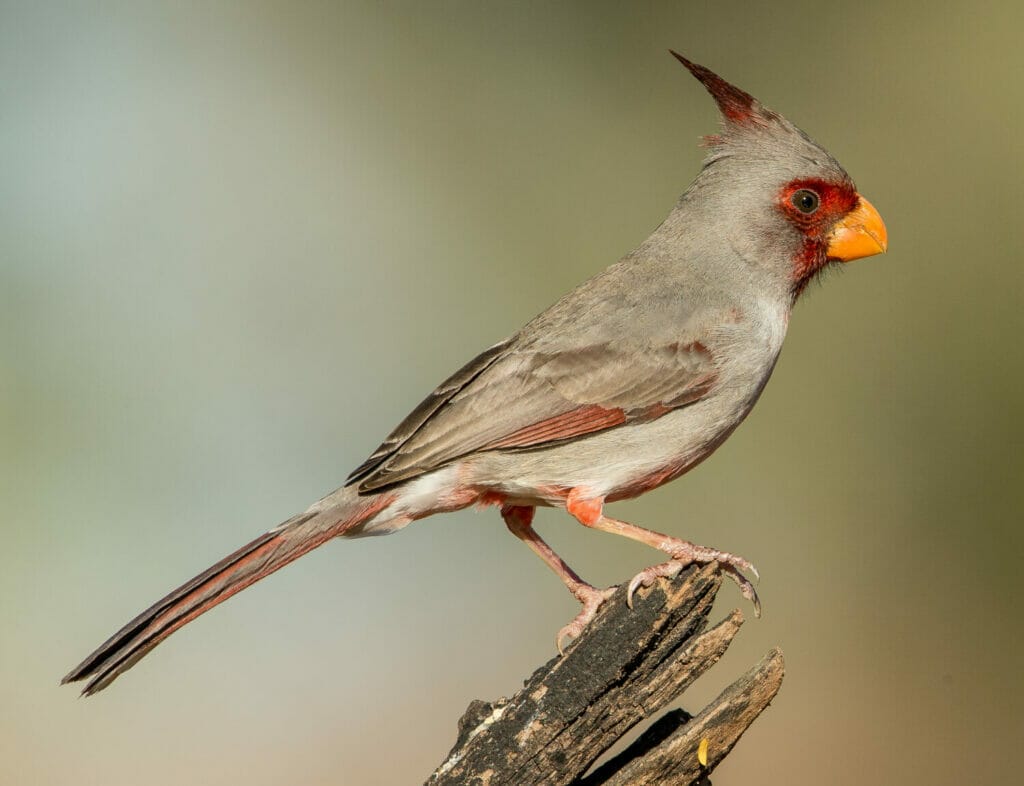
Identification and Size
Another cardinal, looking a bit like an odd Northern Cardinal. The Pyrrhuloxia is a gray bird with red tinges on the throat, face, crest, tail and belly.
Length: 8.3 inches
Weight: 0.8 – 1.5 ounces
Distribution
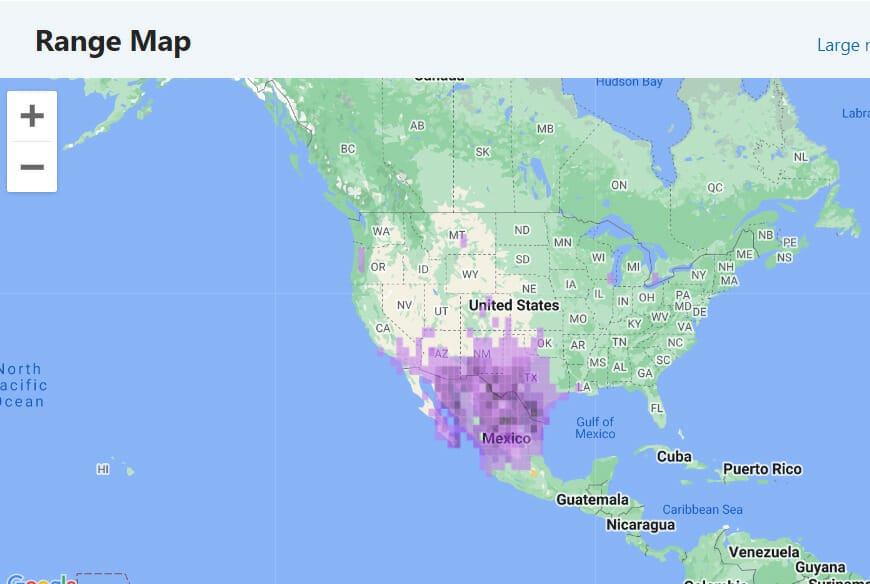
The Pyrrhuloxia is really a Mexican bird that overspills into the south western parts of the U.S. It inhabits dry, desert areas.
Call
Diet
It primarily feeds on seeds but will also consume insects when the opportunity arises.
Interesting Fact
The call of the Pyrrhuloxia is similar to the Northern Cardinal. While they are very different visibly, going on calls alone then identify using their ranges.
Summer Tanager (Piranga rubra)
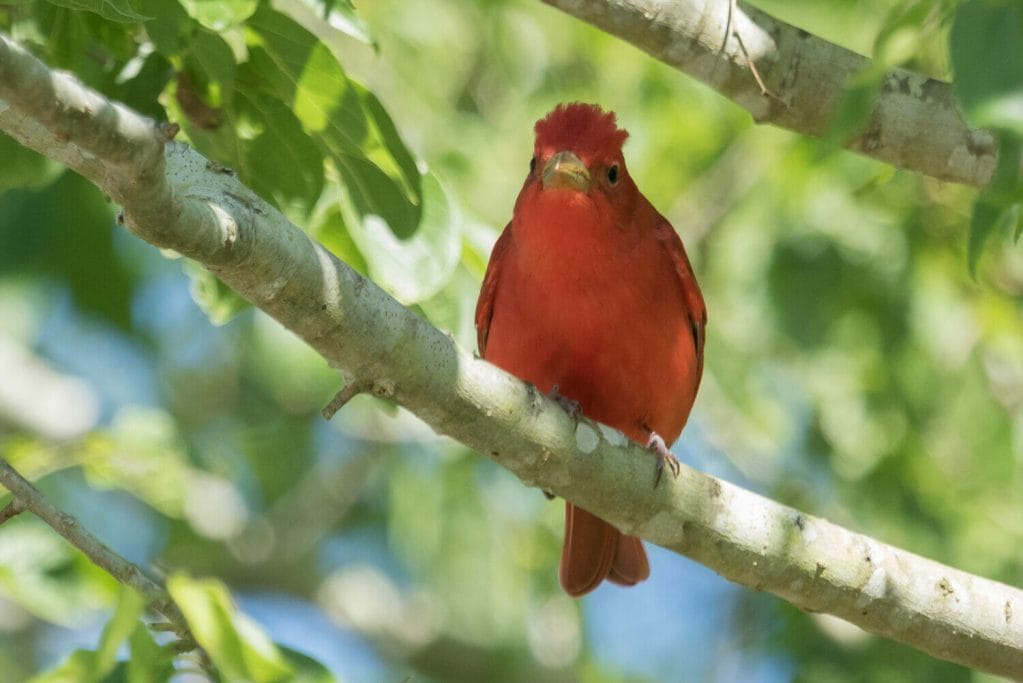
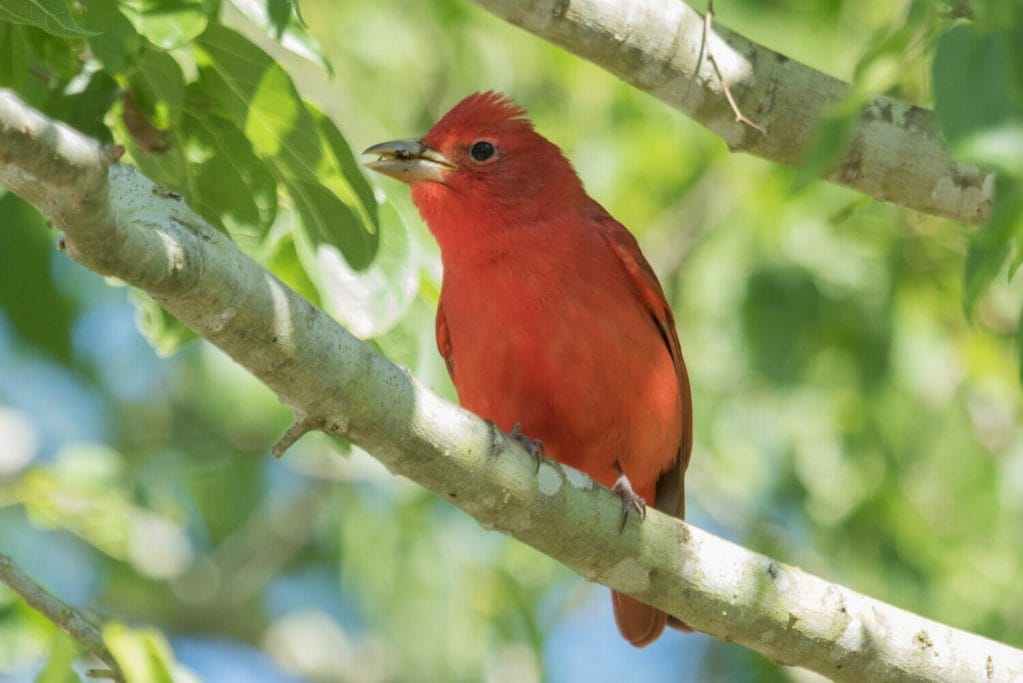
Identification and Size
The male Summer Tanager is large and a stunning red color. While he is unmistakable, the female is duller and yellow or orange.
Length: 6.7 inches
Wingspan: 11 – 11.8 inches
Weight: 1 ounce
Distribution
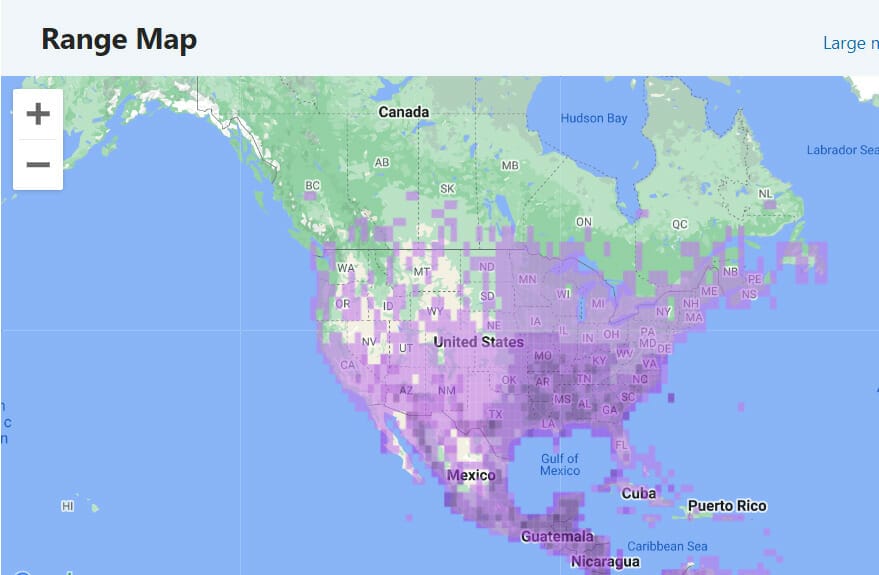
The Summer Tanager is a summer visitor to the United States where it predominately breeds in the south west.
Call
Diet
The Summer Tanager is a specialist feeder, eating bees and wasps in flight.
Interesting Fact
The Summer Tanager is here representing the Tanager family. Closely related to the Scarlet and Western Tanagers that also have red heads.
Vermilion Flycatcher (Pyrocephalus rubinus)
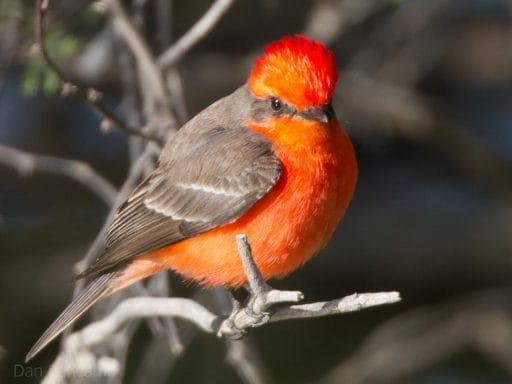
Identification and Size
Unusually for flycatchers, this is a brightly colored bird. The brown and bright red complement each other and the break up of the red across the eye completes an incredible sight.
Length: 5.1 – 5.5 inches
Wingspan: 9.4 – 9.8 inches
Weight: 0.39 – 0.49 ounces
Distribution
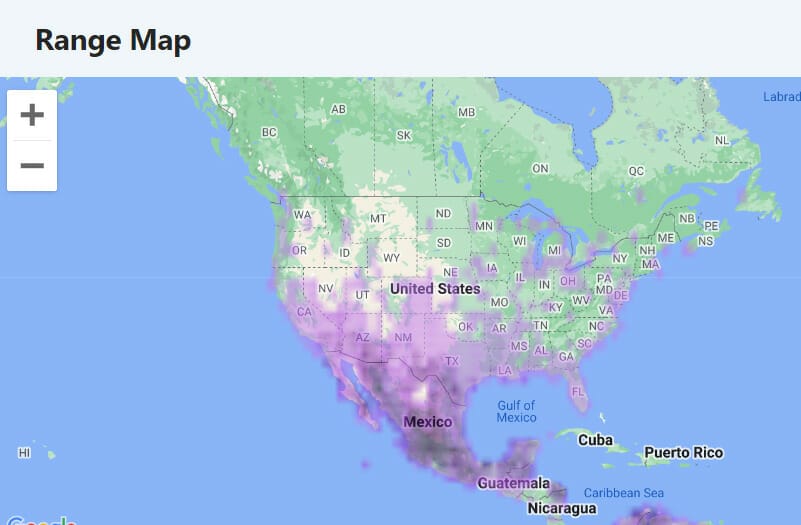
The Vermilion Flycatcher is resident in south western parts of the United States. It inhabits woodlands and scrub areas.
Call
Diet
As you would expect, this flycatcher feeds on winged insects like grasshoppers, beetles and flies.
Interesting Fact
Male birds will bring a gift to a female he wishes to court. They tend to be brightly colored insects.
Red-headed Woodpecker (Melanerpes erythrocephalus)
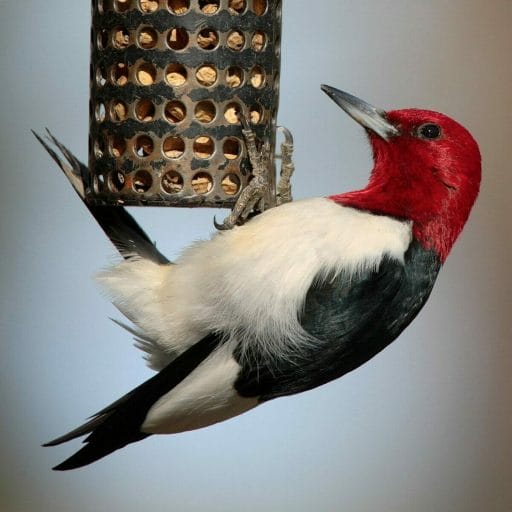
Identification and Size
This is an unmistakable woodpecker with a black and white body that is overshadowed by a bright, crimson head and pale bill.
Length: 7.5 – 9.1 inches
Wingspan: 16.5 inches
Weight: 2 – 3.2 ounces
Distribution
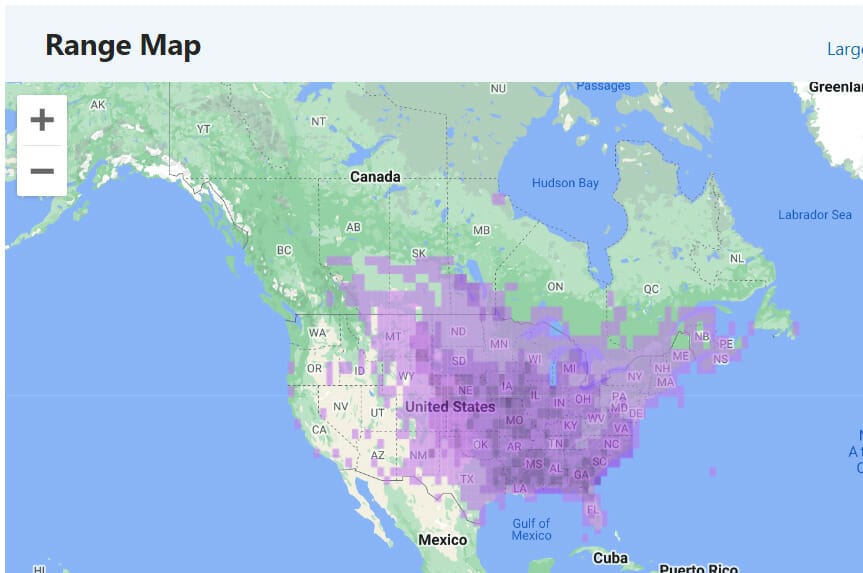
The Red-headed Woodpecker has a wide range across central and eastern parts of continental America.
Call
Diet
This woodpecker has a wide range of food. It will eat fruit and seeds as well as searching through bark for insects.
Interesting Fact
The Red-headed Woodpecker is on our list representing the rest of the species that have red heads. These include: Red-breasted Sapsucker, Red-bellied Woodpecker, Downy Woodpecker, Pileated Woodpecker and Acorn Woodpecker.
That completes the list for red-headed birds in the United States and so to finish we include some favorites from around the world.
Australian King-Parrot (Alisterus scapularis)
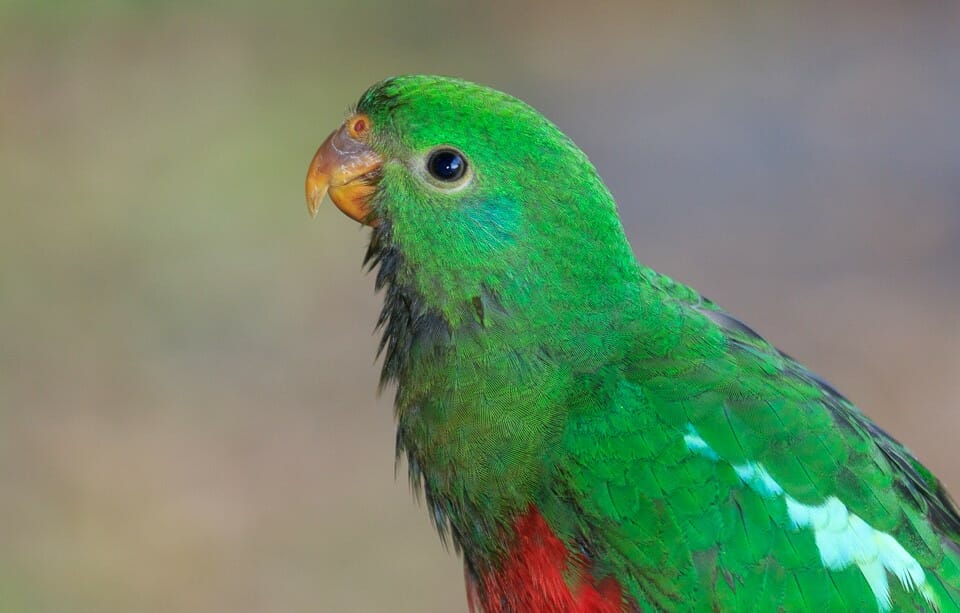
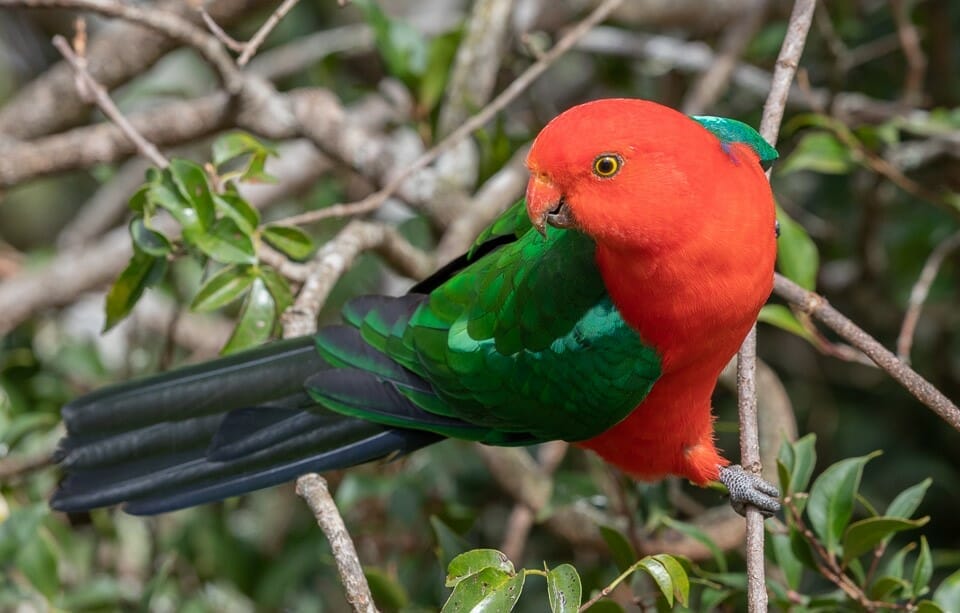
Identification and Size
These stunning parrots really are regal. The female is green with a pale orange bill and red belly. The male is a vivd red underneath and green above.
Length: 17 inches
Weight: 8 – 8.5 ounces
Distribution
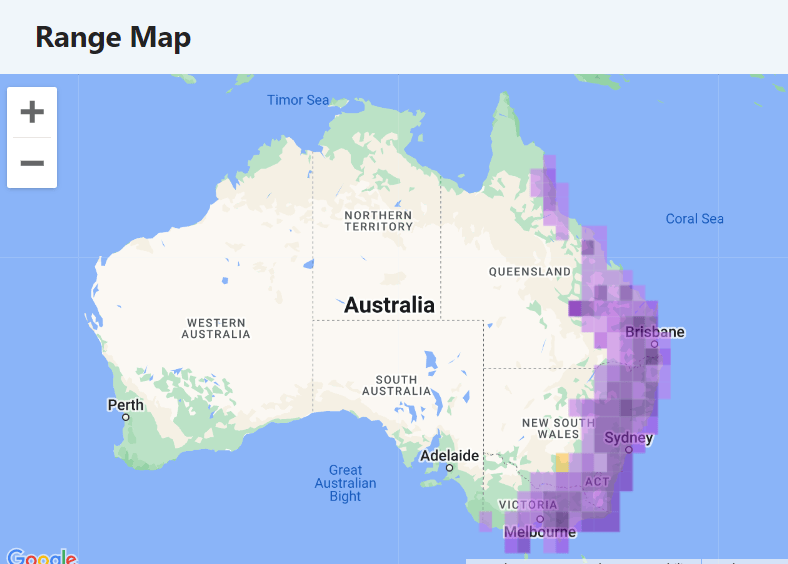
The Australian King Parrot is only found in Australia on the eastern side of the country where it is a common sight at the top of the canopy.
Call
Diet
This parrot feeds in trees on seeds and fruits.
Interesting Fact
Australian King Parrots are very gentle, despite their compartively large size. This does mean that they can be bullied by more aggressive and smaller birds like Rainbow Lorikeets and Sulphur-crested Cockatoo.
Red-headed Barbet (Eubucco bourcierii)
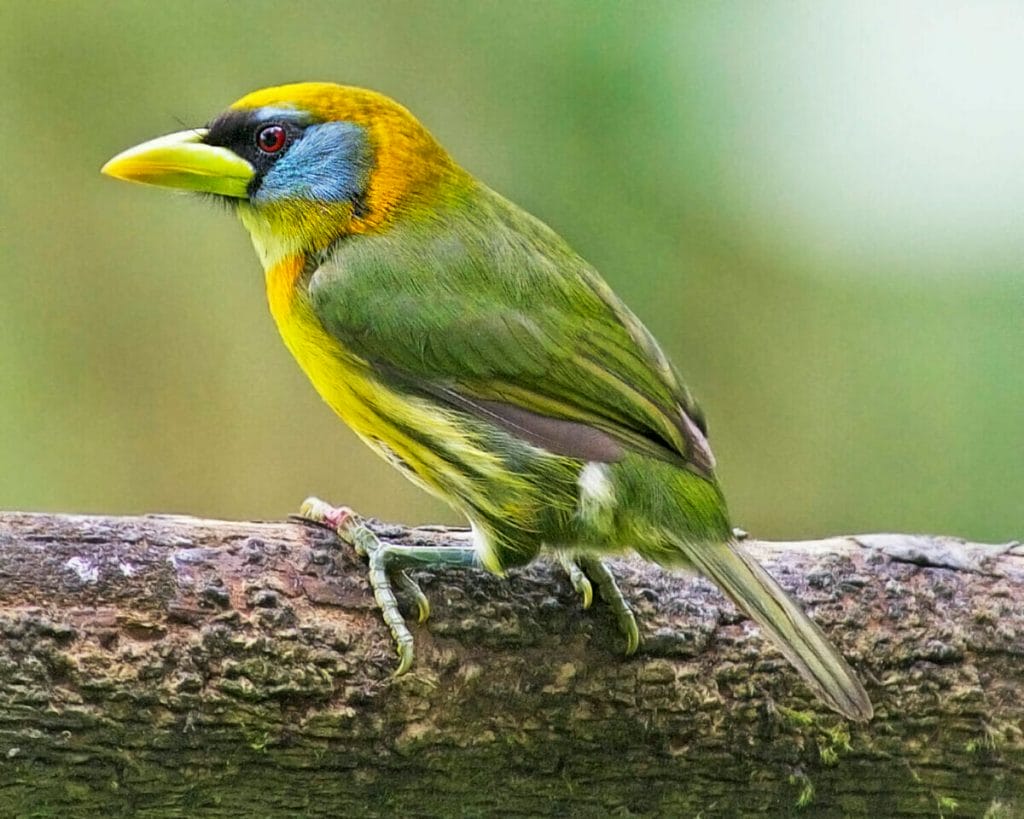
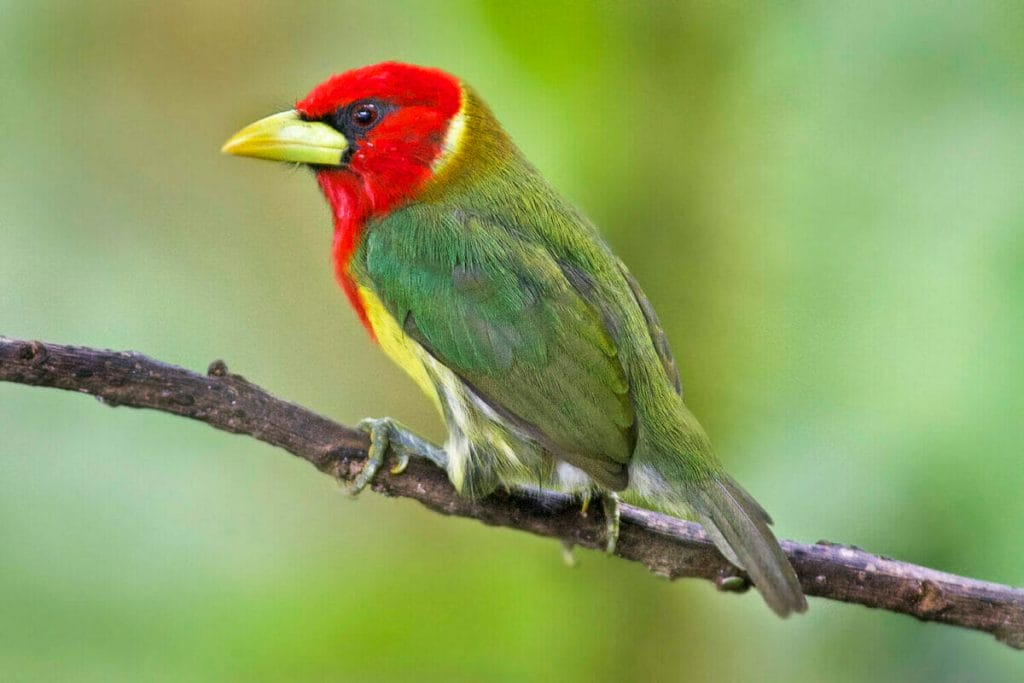
Identification and Size
A squat looking bird, the Red-headed Barbet male is green on the back and yellow on the belly. The bright red head is marked with a white line on the neck and black around the eye. The female is similar but has an orangey head with blue patches.
Length: 6.1 inches
Weight: 1.1 – 1.4 ounces
Distribution
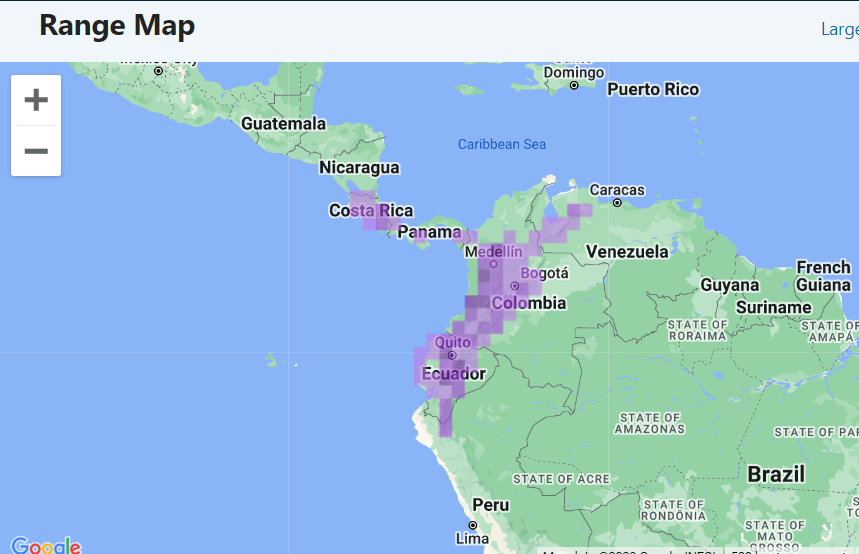
The Red-headed Barbet is found in the north-western part of South America and into Panama and Costa Rica.
Call
Diet
There has not been much scientific study of the Red-headed Barbet and what it eats but it is known that the bird eats caterpillars, insects and fruits.
Interesting Fact
Despite having such a small range and so little known about this bird, there are no less than 6 sub-species.
Scarlet-headed Blackbird (Amblyramphus holosericeus)
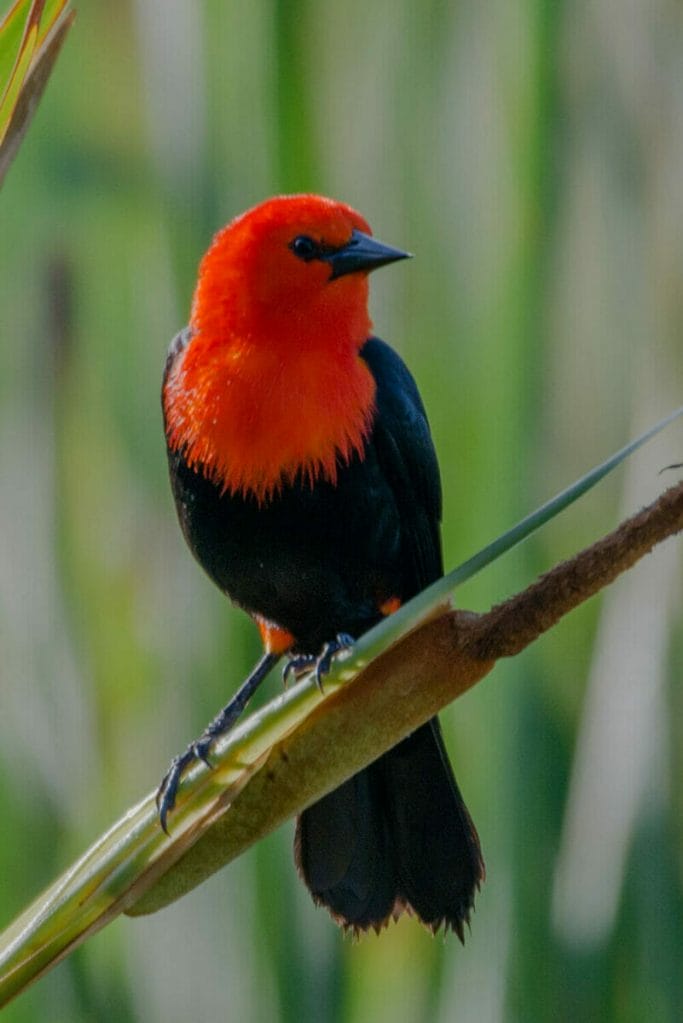
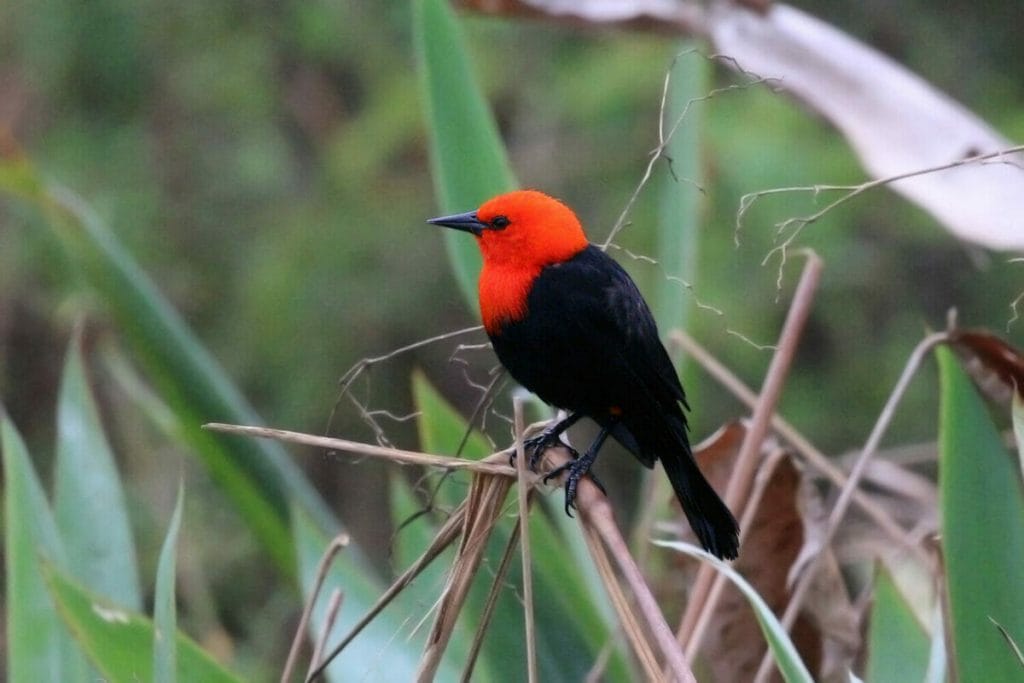
Identification and Size
A most unusual blackbird with deep black plumage and a vivid red head, neck and breast. Look closely to see the red flash on the thighs as well.
Length: 9.4 inches
Weight: 2.6 – 3 ounces
Distribution
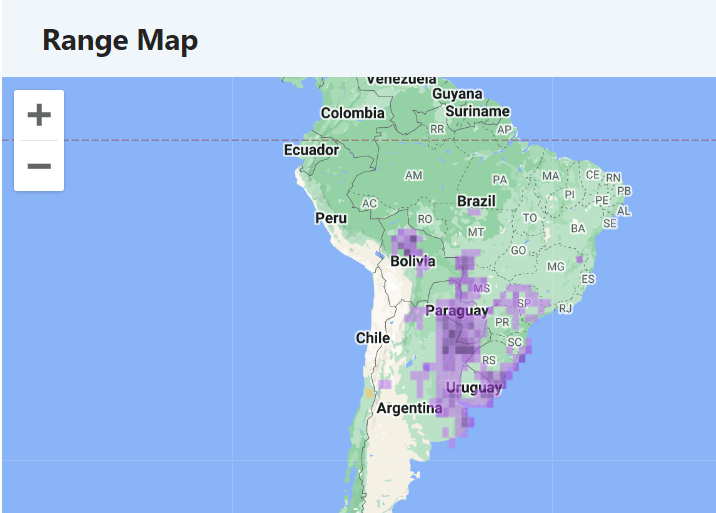
Resident of wetlands in parts of Bolivia, Paraguay and Uruguay.
Call
Diet
The diet of the Scarlet-headed Blackbird is largely fruit but it will also eat seeds and insects at times.
Interesting Fact
When the Scarlet-headed Blackbird is not breeding, they are social birds and will gather in large flocks.
Conclusion
That is our top 10 of birds with red heads. Special mention to the Cardinals. 2 of them made the list and then there is the Red-crested Cardinal of Hawaii. Unfortunately, it is not native so didn’t make the list. My favorite bird here would be the Red-headed Woodpecker. I have never seen one but would love to.
FAQs
Actually, that is a good description of the House Finch. Sparrow with a red head.
The European Goldfinch has a red face and I did consider it for this list.
Most likely you are looking at a Northern Cardinal and it means many things depending on your beleifs and culture. For most people, it is revered and considered lucky.
